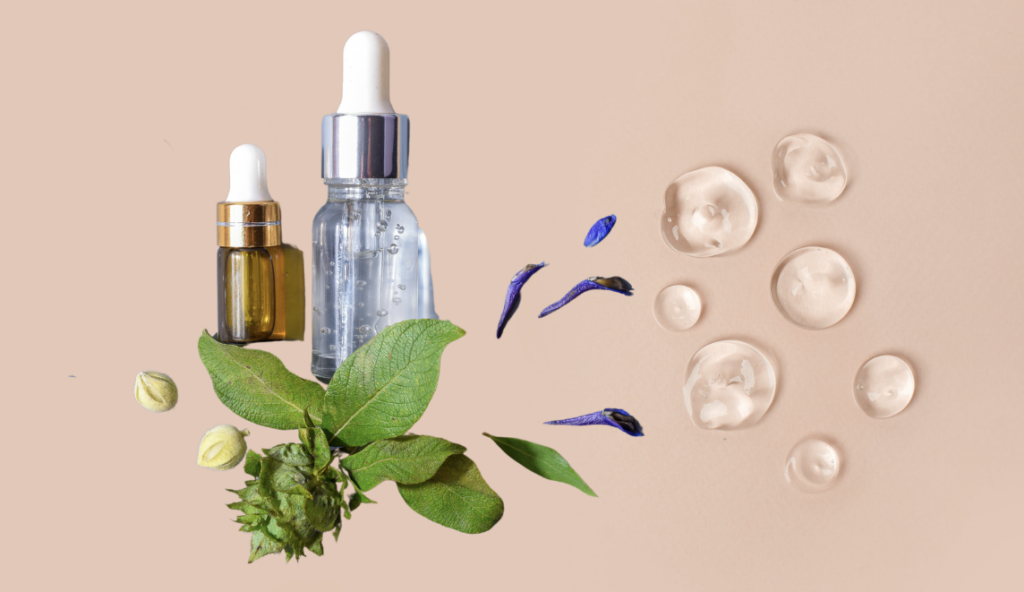Skin Care
Unlocking the Power of Bakuchiol and Retinol
Bakuchiol and retinol are two powerful compounds that have garnered a lot of attention for their anti-aging qualities in the ever-evolving environment of the skincare industry. To what extent, however, are these care superheroes able to be utilized simultaneously, or do they compete with one another? In this article, we will discuss the similarities and differences between retinol and bakuchiol, as well as the potential benefits and risks of combining the two types of retinol and bakuchiol in your beauty routine.

Understanding Bakuchiol and Retinol
Origins and Properties
Bakuchiol is a natural alternative to retinol that has grown in popularity in recent years due to its anti-aging and skin-improving benefits. It is made from the seeds and leaves of the Psoralea corylifolia, or babchi plant, which has been used in traditional Ayurvedic medicine for millennia.
Retinol, on the other hand, is a vitamin A derivative that is widely utilized in skincare products for its ability to diminish fine lines, wrinkles, and other indications of aging. It is an effective antioxidant that protects the skin from environmental stresses and damage.
Bakuchiol is frequently marketed as a natural alternative to retinol since it has similar effects on the skin but without the potential side effects of retinol, such as irritation, dryness, and sensitivity. It is also plant-based, making it a popular choice among individuals who like natural skincare products.
Mechanisms of Action
Both bakuchiol and retinol stimulate collagen formation in the skin, which improves texture and reduces the appearance of fine lines and wrinkles. They also contain antioxidants, which assist to protect the skin from free radical damage.
Retinol works by attaching to certain receptors in the skin, activating a series of biological processes that result in enhanced collagen formation. Bakuchiol, on the other hand, acts by activating a distinct set of receptors, which stimulates collagen formation.
While these substances have similar effects on the skin, they use different methods and can be combined to maximize their advantages. In fact, studies have shown that bakuchiol can boost the skin’s tolerance to retinol, making it an ideal combination for individuals looking to reap the advantages of both substances.

Benefits of Combining Bakuchiol with Retinol
When it comes to skincare, combining different components can result in greater advantages. Bakuchiol and retinol are two popular chemicals that are frequently combined in skincare products. Here are some advantages of mixing these two ingredients together:
Enhanced Skin Benefits
Bakuchiol and retinol are both anti-aging ingredients that can help minimize the appearance of wrinkles and fine lines. Retinol stimulates collagen formation, which improves skin texture, elasticity, and firmness. Bakuchiol, on the other hand, has been shown to increase skin moisture, reduce hyperpigmentation, and prevent UV damage. When combined, these substances can create a more comprehensive anti-aging treatment.
Reduced Skin Irritation
Retinol can cause skin irritation, particularly in persons with sensitive skin. Bakuchiol, on the other hand, contains anti-inflammatory and antibacterial characteristics that can aid to alleviate inflammation and discomfort. By mixing bakuchiol and retinol, consumers can lower their chances of encountering negative effects including redness, dryness, or peeling.
Overall, combining bakuchiol with retinol can result in a more potent and benign anti-aging treatment. It’s crucial to remember that not all skincare products containing these components are made equal. Users should look for moisturizers, serums, or creams that have the right concentrations of each ingredient and are tailored to their unique skin type.

Safe Usage and Best Practices
Application Techniques
When combining bakuchiol and retinol, it is critical to follow basic best practices to avoid skin irritation or sensitivity. First, it is recommended that you begin carefully and gradually increase the frequency of use. It is also vital to use a pea-sized amount of each product and apply them separately, using bakuchiol in the morning and retinol at night.
It is also recommended that you thoroughly cleanse your skin before applying either product, and that you use a hydrator like hyaluronic acid to keep it from drying out. Additionally, sunscreen should be applied during the day to prevent the skin from sun sensitivity caused by retinol.
Combination with Other Skincare Ingredients
When using bakuchiol and retinol together, avoid mixing them with other skincare components that may cause further irritation or sensitivity. It is not recommended to use salicylic acid, benzoyl peroxide, or AHA treatments that contain these chemicals.
Bakuchiol and retinol can, however, be safely mixed with other skincare components including as vitamin C, niacinamide, and peptides. Patch testing is recommended for each new product combination before applying it to the entire face.
Overall, combining bakuchiol with retinol can be a safe and effective treatment for a range of skin issues, including photodamage, skin laxity, and acne-prone skin. However, it is critical to adhere to these recommended practices to avoid potential irritation or sensitivity, and to check with a dermatologist if any problems develop.
Conclusion
While retinol and bakuchiol both offer considerable anti-aging benefits, it is important to keep in mind that using both of these ingredients into your skincare routine requires careful thought. In spite of the fact that some studies have found that they function well together, other studies have warned against the possibility of interactions and irritations. The final step is to consult with a dermatologist or other skincare specialist in order to determine which approach is most suitable for your individual skin needs and objectives.
Trusted Health, Wellness, and Medical advice for your well-being


